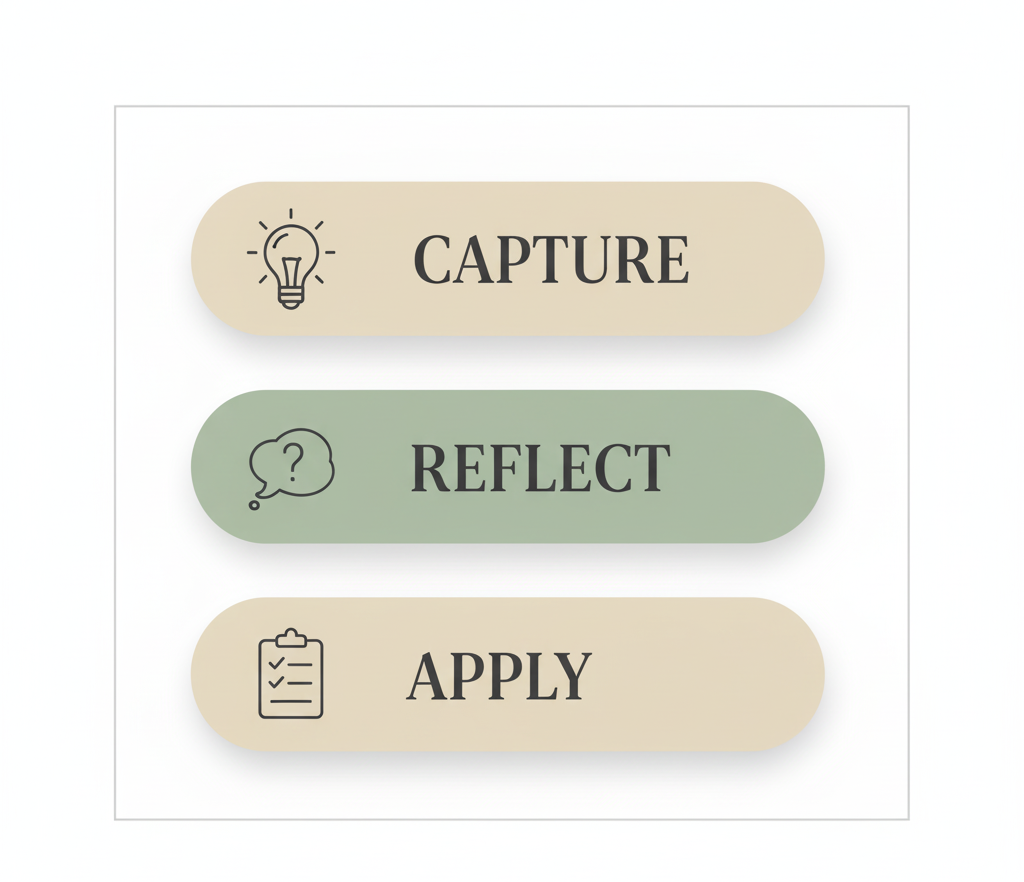Do you ever open ChatGPT, stare at the blinking cursor, and wonder how this tool could actually help you learn — not just write emails faster? You’re not alone.
AI can feel both magical and overwhelming. One minute, you’re getting an elegant summary of a 10-page article. The next, you’re lost in an AI rabbit hole of prompts and plugins.
When I first started using ChatGPT for learning, I was skeptical. I didn’t need another productivity app — I needed clarity. But over time, I discovered something surprising: with the right approach, ChatGPT isn’t a distraction machine. It’s a thinking partner — one that helps you focus, reflect, and retain knowledge more deeply.
In this guide, we’ll explore how to use ChatGPT for learning and focus — not as a shortcut, but as a quiet, intelligent companion for deeper work.
1. Rethinking ChatGPT: From Answer Machine to Thought Partner

Most people use ChatGPT like a Google search bar with better grammar. But the real magic happens when you treat it like a study buddy who helps you think, not just fetch information.
When you ask ChatGPT to explain concepts, test your understanding, or challenge your assumptions, it becomes a mirror for your thinking.
Example prompt:
“Explain this idea as if I’m a beginner — then quiz me on it like a teacher.”
That’s not automation. That’s collaboration.
Key takeaway: ChatGPT works best when you use it to process information, not replace your thinking.
How to Shift Your Mindset
Try this simple switch:
- Don’t ask: “What’s the answer?”
- Do ask: “Help me explore this idea.”
You’ll notice how the tone — and the results — change. ChatGPT becomes less of a tool and more of a guid
2. Setting Up a Learning System with ChatGPT
If you’re juggling articles, notes, and half-read PDFs, you probably need more structure than motivation. A learning stack with ChatGPT at the core can simplify how you capture and process information.
Here’s a simple 3-step system:
1. Capture
Feed ChatGPT the sources you’re learning from — articles, notes, or transcripts.
Example prompt:
“Summarize the key insights from this text in bullet points, focusing on concepts that could improve my workflow.”
2. Reflect
Ask ChatGPT to help you think critically.
Example:
“What are the assumptions behind this argument? Do you agree with them?”
3. Apply
Turn insights into small, doable experiments.
Example:
“Give me three simple ways to apply this concept in my daily routine.”
Key takeaway: Learning systems stick when they combine reflection and application — not just input.
Bonus Tip: Pair ChatGPT with a Note App
If you use Notion, Obsidian, or Evernote, integrate ChatGPT’s outputs directly into your note system. This makes your digital learning stack fluid — insights move smoothly from AI to your personal knowledge base.
3. ChatGPT for Focused Thinking

Focus isn’t about eliminating distractions — it’s about framing your attention. ChatGPT can help you do that by acting as your focus coach.
Here’s how:
1. Clarify What Matters
Start your work session with a ChatGPT check-in.
Prompt: “Help me outline my top 3 priorities for the next 2 hours based on my task list.”
2. Break Down Cognitive Overload
If a task feels mentally heavy, ask ChatGPT to chunk it down.
Prompt: “This task feels overwhelming. Can you break it into small, clear steps?”
3. End with Reflection
After your session, ask: “Summarize what I accomplished today and what to improve next time.”
Over time, this creates a rhythm — focus, execute, reflect — that naturally builds attention and flow.
Key takeaway: ChatGPT can serve as a “mental reset button” when your mind starts to wander.
4. Learning Faster with ChatGPT’s Socratic Style
Want to retain knowledge longer? Don’t let ChatGPT lecture you — let it question you.
The Socratic method (learning through guided questions) works beautifully with AI.
Example prompt:
“Ask me 5 progressively harder questions about deep work principles. Wait for my answer before asking the next.”
Why this works: answering questions forces recall — the most effective way to strengthen memory.
Pro tip: Have ChatGPT simulate a “mock conversation” where you teach it a concept. Teaching is one of the fastest paths to mastery.
Mini-Framework: The Reflective Loop
- Ask ChatGPT to explain a concept.
- Summarize it in your own words.
- Ask ChatGPT to check your understanding.
- Refine your summary until it feels clear and concise.
This back-and-forth is where focus meets depth — it’s not multitasking; it’s metacognition.
5. Using ChatGPT for Calm Productivity

Most productivity tools push you to do more. ChatGPT helps you do better — when used with intention.
Here are a few mindful ways to bring calm structure to your workday:
1. Start Your Day with a Focus Prompt
“Help me define one meaningful goal for today that aligns with my long-term priorities.”
2. Create a Reflection Habit
At the end of the day, ask:
“What did I learn today that I want to remember?”
3. Balance Inputs and Outputs
ChatGPT can help filter the noise. Try:
“Summarize this article in 5 bullet points — but focus only on what’s actionable.”
Key takeaway: AI can’t create calm for you, but it can help you design it.
6. Avoiding the Pitfalls of AI-Assisted Learning
Let’s be honest — ChatGPT can also derail your focus. Endless prompts can feel productive while secretly keeping you from doing the real work.
Here’s how to avoid that trap:
1. Don’t Over-Automate
If you use ChatGPT for everything, you stop thinking critically.
Use it to spark thought, not outsource it.
2. Limit Session Time
Set boundaries.
Try: 20 minutes of AI-assisted brainstorming → 60 minutes of independent focus work.
3. Review Before You Accept
Always fact-check and rephrase insights in your own words. This keeps your learning active, not passive.
Key takeaway: ChatGPT is powerful, but your focus — not its features — drives results.
7. Building Your AI Learning Ritual
Rituals anchor our attention. To use ChatGPT effectively, make it part of a daily or weekly learning rhythm.
Here’s a simple template:
Morning:
– Ask ChatGPT to clarify a concept you’re currently studying.
– Create 3 reflection questions to guide your focus.
Midday:
– Use it to summarize notes or create practice questions.
Evening:
– Reflect: “What new ideas did I explore today, and how do they connect to my goals?”
Optional: Save your favorite AI conversations in a note-taking app. You’ll be surprised how much intellectual gold you uncover over time.
8. Books, Tools & Prompts Worth Exploring
Here are some great companions for your ChatGPT learning journey:
- Books: Deep Work by Cal Newport, Make It Stick by Brown, and Building a Second Brain by Tiago Forte.
- Tools: Notion, Readwise, Obsidian, and ChatGPT Plus (for custom instructions).
- Prompts to Try:
- “Help me learn this topic using real-world analogies.”
- “Generate a daily reflection question based on what I read.”
- “Design a 30-minute focus session plan.”
Conclusion

If you use ChatGPT with presence and purpose, it stops being a distraction and becomes a quiet teacher.
It’s not here to replace your thinking — it’s here to refine it. With a little structure and a lot of curiosity, AI can help you build clarity, focus, and flow into your learning practice.
So here’s your gentle challenge: tomorrow, open ChatGPT and ask one meaningful question — not for the answer, but for the insight it sparks.
If you’d like to go deeper, check out my article “Organize Your Learning Stack” — it pairs perfectly with this one and helps you turn AI-powered insights into a system that actually sticks.





